The first lap from the Medical Car perspective
Adrenaline is flowing ...
- -
- -

Among the various roles I had in Formula 1, by far the most visible was following the first race lap. Just before the lights went out at the start of each race, I took my seat in the gorgeous Mercedes medical car to line up precisely in the middle of the two rows of racers.
That first lap behind the pack of single seaters, obviously the high point of the weekend, actually represented the LAST step of a ritual that I repeated 247 times. What did it consist of? What happens when we’re seated in the Medical Car, helmetted and belted in place, behind the last car on the grid? Let’s take a look.
In fact, my preparations for the race itself started exactly 40 minutes before the green lights go on for the formation lap. As I headed towards the AMG-Mercedes garage and the Medical Car, I always stopped in the kitchen of the FIA hospitality unit. To grab a last minute drink? Nope. A quick bite before the race? No way. I headed straight to the refrigerator, where I grabbed the two litres of iced saline solution that I’d put away for this purpose. In case of a severe head injury, I’d infuse these quickly, to cool (and therefore protect) the victim’s brain.
Now it’s time to head to the Medical Car. Verify all the equipment, make sure everything is tied down properly. Our lap, at speed in the C63 AMG driven by Alan van der Merwe (former British F3 champion and ex-reserve driver for BAR Honda) gets pretty violent, and we don’t want kit flying around the car as we fly around the circuit!
Exactly 30 minutes before the start, the pitlane opens. The drivers leave their garages and either proceed to the grid (where the grid girls are already in place) or continue for another lap, bypassing the grid by driving through the pitlane again. The Medical Car is in front of its garage, orange lights on. Alan and I are ready, helmets on, earpieces plugged into our handheld radios, enjoying the spectacle, so that race control can call on us if something goes wrong during the 15 minutes the pit lane stays open.
It’s during those 15 minutes that the “mob” one sees on the grid forms, with hundreds of people crossing the pitlane in just a few minutes time. This for me is a terrifying moment, as the drivers scream down the pitlane with every expectation that those in front of them will get out of the way, while most of those same people are totally unaware of the danger.
Fifteen minutes later, and exactly 15 minutes before the green lights, the pitlane is closed, with all cars starting from the grid in place. A last minute run to the men’s room is a good idea now, confirmed by the mad dash to the same place by most of the drivers.
T minus 5 minutes 30 seconds: we leave the pitlane onto the circuit, to our holding position. During the lap, we check the digital and analog radios, Alan makes sure the car feels mechanically fine, and we both keep race control aware of anything that might have changed on the circuit since the last inspection lap. We pull off the circuit at a prearranged position to wait for the pack of cars, on their formation lap, to pass us. Race control tells us if any cars have been left on the grid.
This is important information for us, because about 90 seconds later, the polesitter blasts past us, followed in close order by the rest of the grid. Alan and I each count them silently. “That 22?” “Yep.” “Let’s go.” We bump over the curb and join behind the last cars, still furiously heating their tyres. They’re lined up. We’re smack in the middle of the two rows. Seems like forever. Heat shimmering from the engines make it all look like a painting.
The lights start to go on. Really focusing now, quick mental review of procedures. Then always a quick thought – adressed to whomever, whatever – “just keep everybody safe. And if I have to work, make sure I do it right”. First light. Second. We scan the grid – smoke? Yellow flags? A waved arm? Third. Fourth. 22 motors at 18,000 revs. Everything is shaking. The fifth light goes on. Seems like forever . . . again. Lights out! Huge blueish cloud of rubber, exhaust, dust, heat. Cars everywhere, three abreast, zig-zagging insanely. Alan is concentrating on driving, I’m looking to make sure no one’s left on the grid. If so, QUICKLY- left or right? Past the stalled car. Now we need to be sure we’re out of his way when he gets going again. Race control, our mirrors, and the rear camera of the car help with that. As we move over, we show him the green light, so he knows we know he’s there.
The pack is at the first corner, so we strain our eyes to see what’s happening. Too far ahead, too much exhaust to see details. But we can see debris, cars getting launched, and get ready to assess a situation. We drive close to any cars involved in an accident, because the drivers know we’re looking for a thumbs up to allow us on our way. No thumbs up means we might have to stop and get out. Often it’s because the driver is on the radio, excoriating the author of the accident (or making excuses already if he is the author!). Can’t lose time though, these guys are very very fast.
And then . . . the loneliest lap of the weekend. The racers are far ahead of us. They’re so fast that they finish their first lap when we’re about 2/3 around. Now they’re chasing us down. Now we have to pay attention not only to what’s ahead, but what’s behind. Race control tells us if there is anything we need to know. I watch the big screens around the circuit for any information we can find there.
On an “uneventful” lap, we enter the pitlane, siren blaring so any stray personnel hear us before we barrel in. We proceed to the pit exit, and take our place next to the Safety Car. Hopefully to enjoy the rest of the race. But if needed, we’re ready to go. The F1 cars? Oh yeah – they’re 20 seconds behind us . . . on their second lap!
-follow Gary on Twitter (@former_f1doc)-





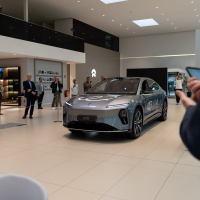
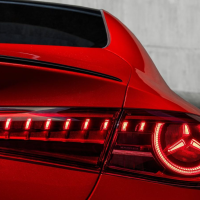


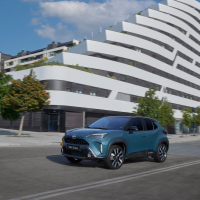

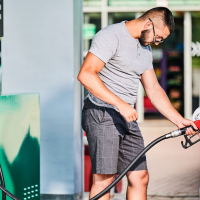
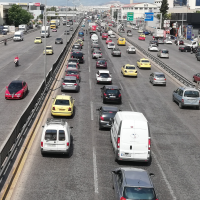



 και στη συνέχεια 'Προσθήκη στην οθόνη αφετηρίας'
και στη συνέχεια 'Προσθήκη στην οθόνη αφετηρίας'